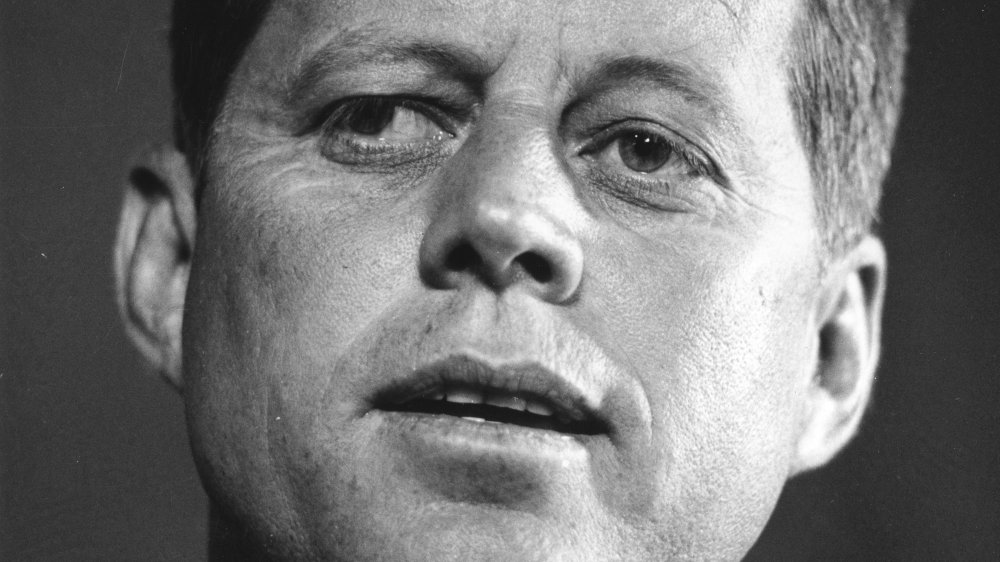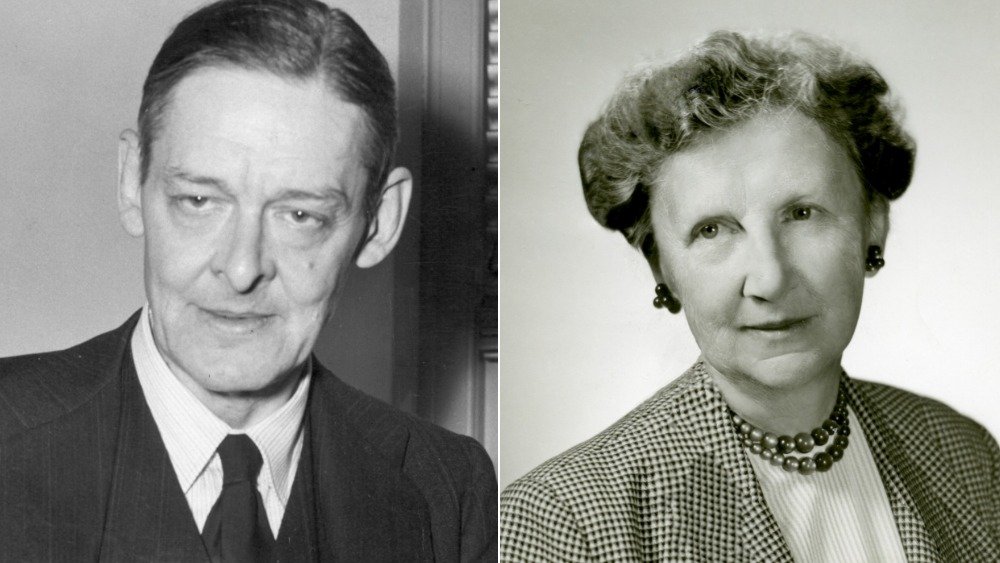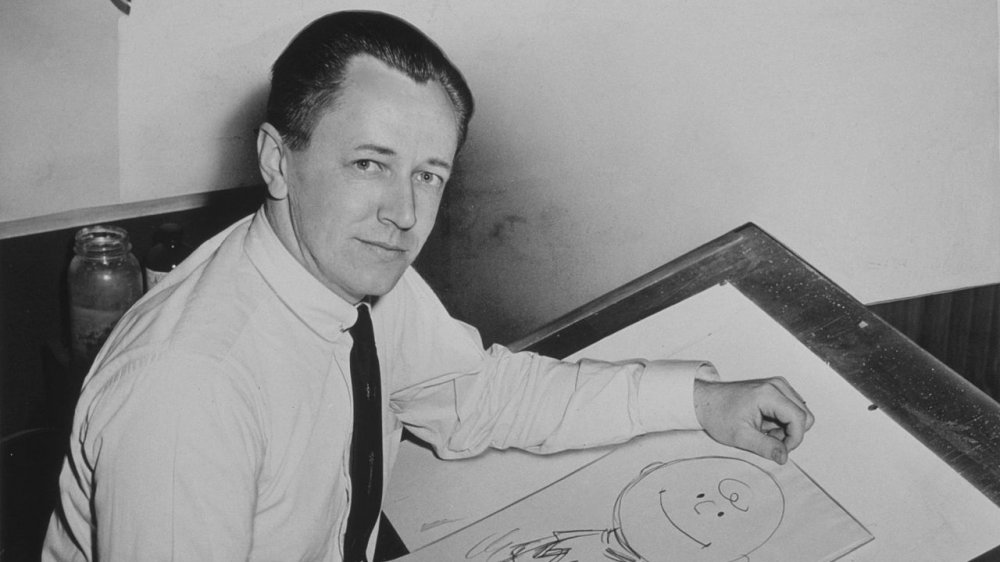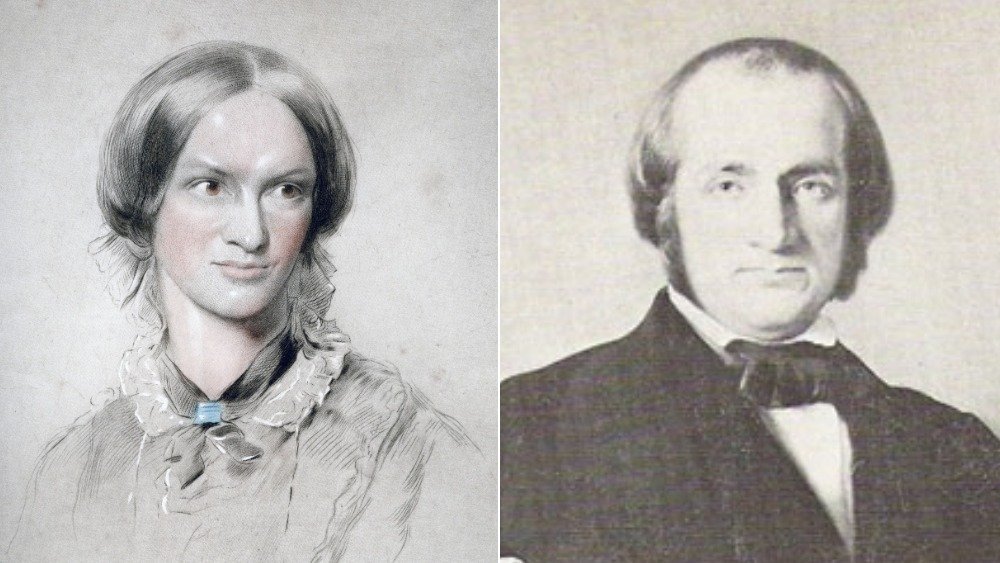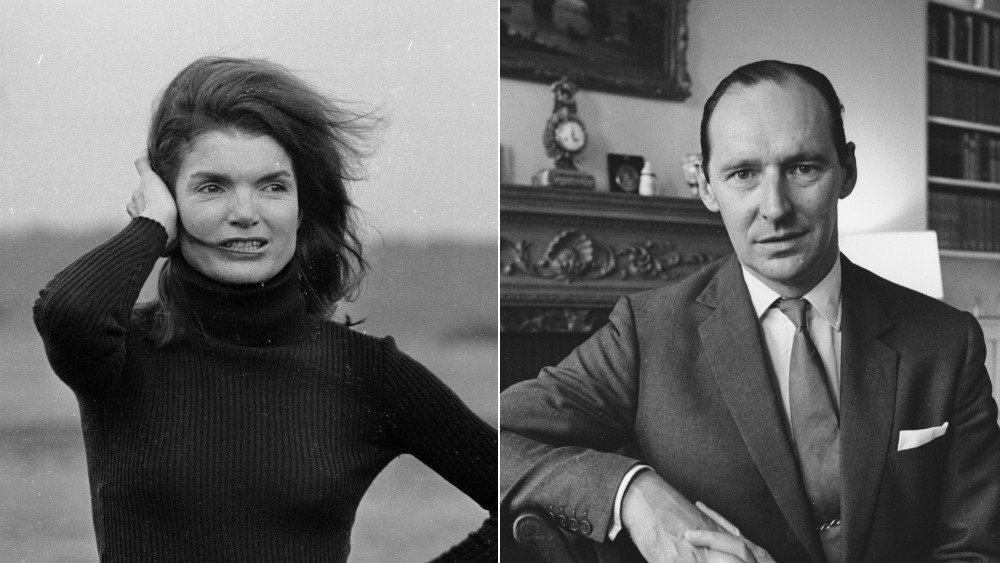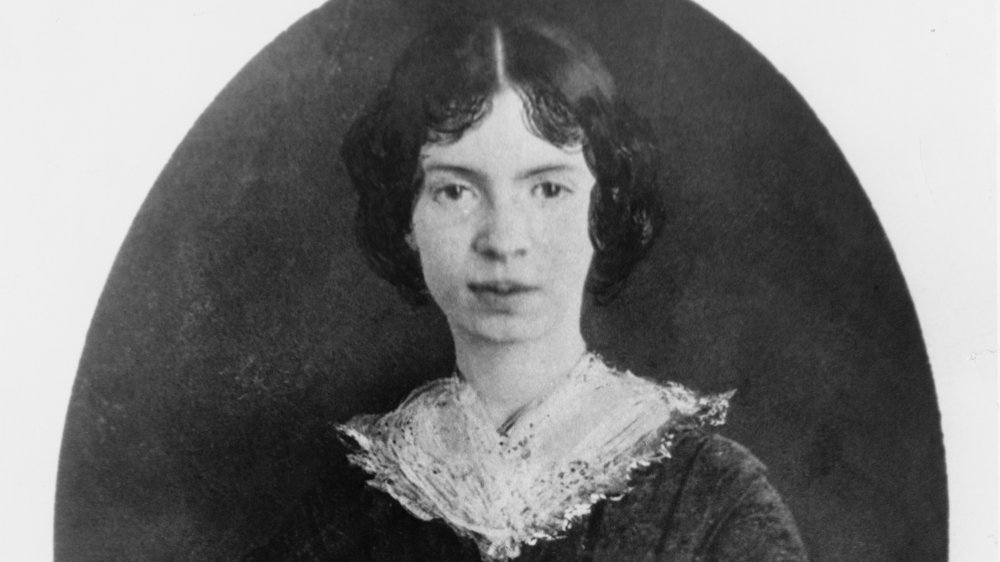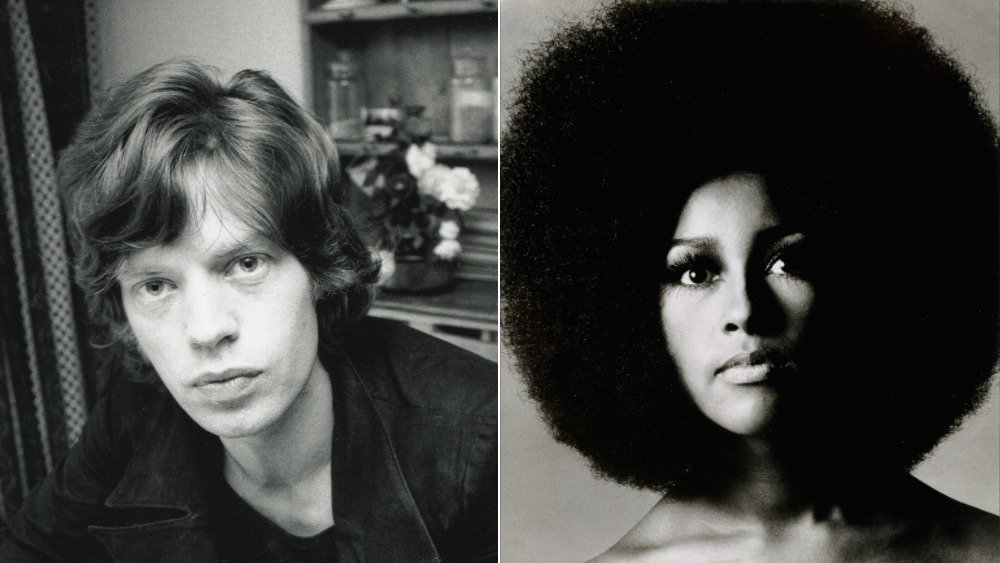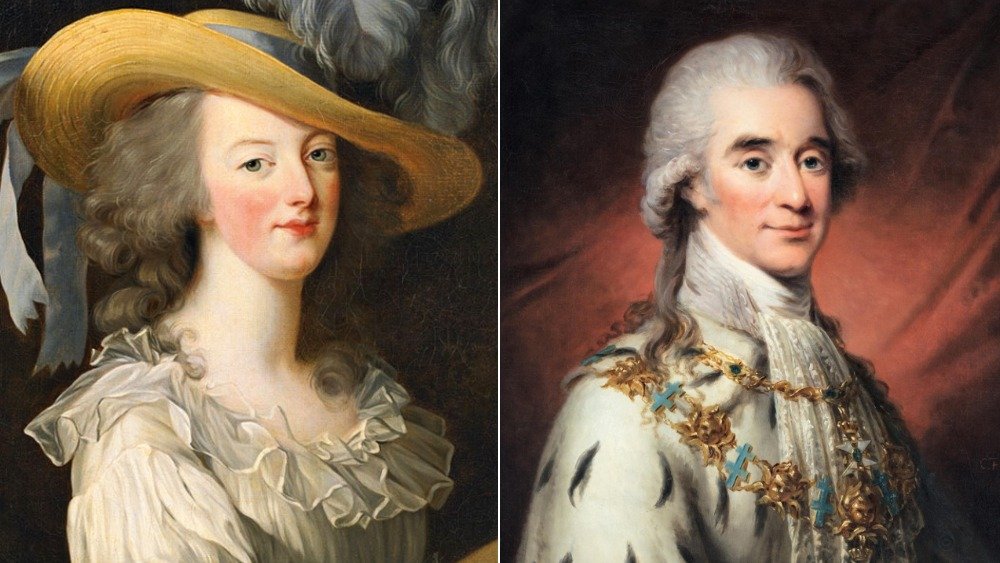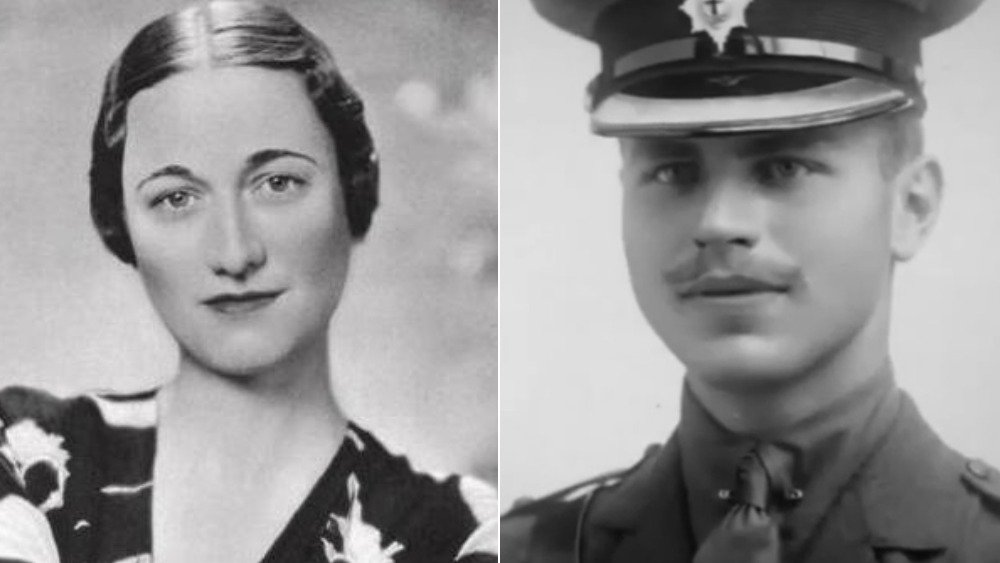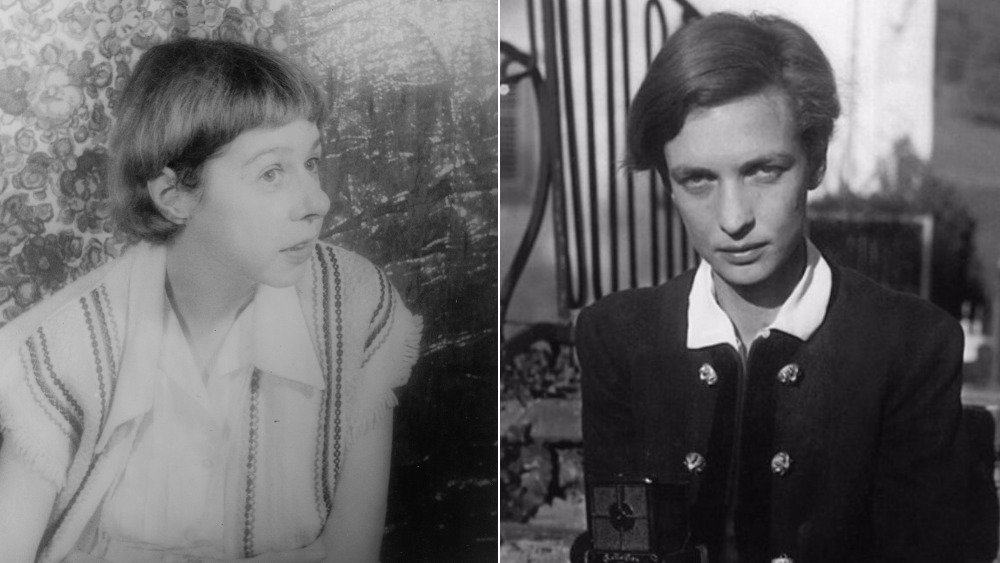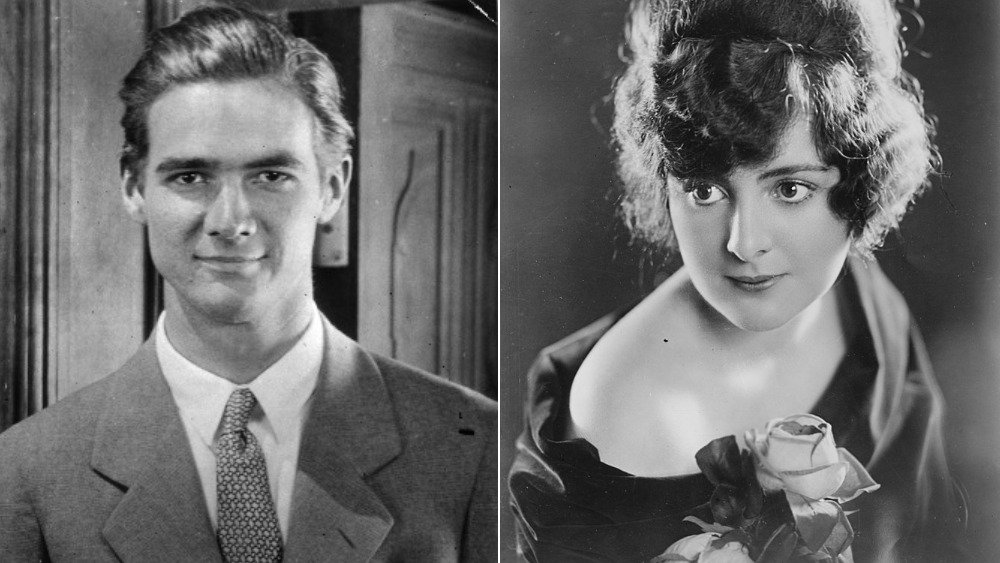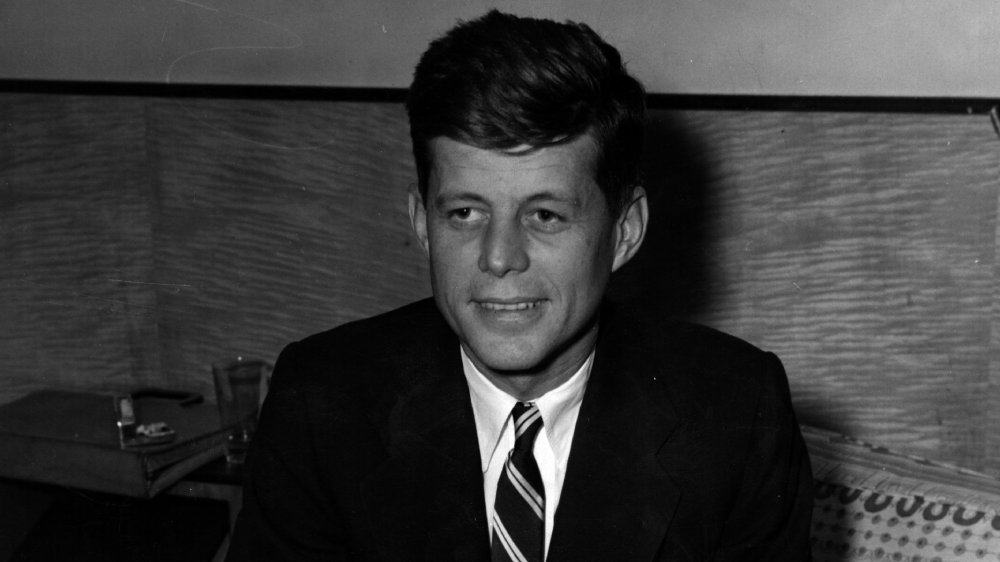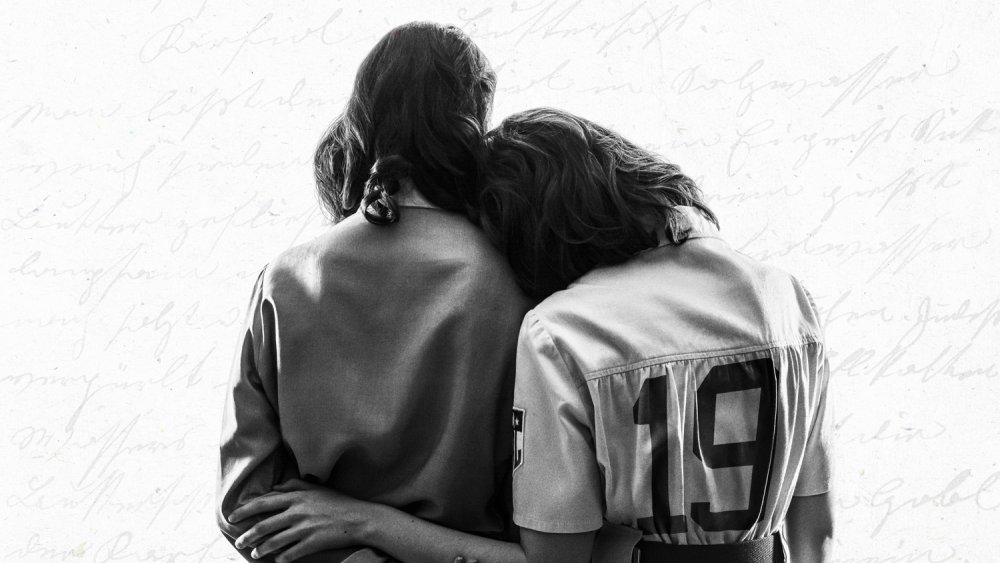Secret Love Letters Throughout History
Writing a love letter is equal parts art and science. It's also a big deal committing your emotions to paper and offering the evidence up freely, sometimes without knowing what the response will be. Even if you're confident that the other person reciprocates your feelings, there are plenty of scenarios where putting your emotions into writing can be dangerous. Because if there's one thing that history teaches us, it's that every secret eventually comes out.
Of course, no one's thinking about their place in history when penning a passionate love letter — it's an intensely intimate act, even more so if the letters are meant to be secret. Various secret love letters throughout history were hidden for many different reasons. Sometimes it was political difficulties, sometimes marriages and other relationships stood in the way, and sometimes society as a whole wasn't ready for the nature of the relationship. The secret love letters discussed here were written by artists, celebrities, royalty, politicians, and everyday people. What links them is the passion they were determined to express no matter what obstacles stood in their way.
T.S. Eliot and Emily Hale
T.S. Eliot is a giant of Western Literature. Poems like "The Love Song of J. Alfred Prufrock" and "The Waste Land" continue to be read, studied, and taught nearly a century after their initial publication, and his book Old Possum's Book of Practical Cats inspired one of our most enduring pieces of pop culture, the musical Cats.
As The Independent reports, scholars know that Eliot met Emily Hale at Harvard in 1912. They clearly had a strong connection, maintaining a long-distance relationship even as Eliot became miserably married and went on to worldwide fame as a writer. Hale is often referred to as Eliot's "muse" and is suspected to have been the inspiration for much of his work. According to The Guardian, Hale gave more than 1,000 letters from Eliot to Princeton in 1956, on the condition that they not be made public until 50 years after her death. The clock began ticking when she passed away in 1969. Dramatically, Eliot had a statement on the letters prepared — which was also kept private until 2019.
The secret love letters reveal that Eliot was deeply in love with Hale — but it's not a romantic story. Eliot's statement is a shockingly petty document that claims he'd long gotten over her — and that if he would have married her, she "would have killed the poet in [him]" and he "would probably have become a mediocre philosophy professor." Ouch.
Charles Schulz and Tracey Claudius
Some secret love letters are notable because of historical significance, some because of the poetry and passion behind them. And some are notable because they have other, more measurable value. Case in point: the letters cartoonist and Peanuts creator Charles Schulz sent to Tracey Claudius.
As Vanity Fair reports, Schulz began having an affair with Claudius in the early 1970s, when she was 25 and he was 48 — and very married. He was so taken with her that he sent her love notes every month to mark the anniversary of their affair. That's shocking enough to fans of his timeless and extremely wholesome comic strip, but as The Daily Cartoonist reports, what makes these notes so special is that he frequently doodled sketches of his famous characters in them and even jotted out rough versions of comics that later appeared in final form. This makes the love letters, which went up for auction in 2012, incredibly valuable beyond the romantic drama.
Incredibly, Schulz also referenced his affair in Peanuts. In one letter to Claudius, he reveals that his wife has discovered his long-distance phone calls to her — and shortly afterward, Charlie Brown complains to Snoopy about a "girl beagle" and the "long-distance phone calls" the dog is making. Schulz asked Claudius to marry him twice — and she turned him down twice. He divorced his first wife in 1972, and a year later, he married Jean Forsyth Clyde.
Charlotte Brontë and Constantin Heger
Charlotte Brontë wrote one of the most celebrated novels of all time, Jane Eyre. That and her other novels are famously personal and confessional, taking inspiration from her own life and inspiring people throughout the years to pore over her work and try to make connections to real people.
One connection remained under the radar for decades, however. As The Guardian reports, in 1842, five years before publishing Jane Eyre under a pseudonym, Charlotte and her sister Emily attended a school run by Zoe Heger and her husband, Constantin. Charlotte returned to teach there the next year, and it was no big secret that she held Constantin in very high regard. What wasn't known until 1913 was that Charlotte's feelings went much deeper than admiration. Constantin's children stumbled on Charlotte's letters when their mother passed away in 1890. The letters reveal a deep love for Constantin — followed by a deep anger when he refused to reciprocate her feelings.
In its study of the letters, Graphology World notes that Constantin routinely tore Charlotte's letters up and tossed them into the wastepaper basket — but Zoe apparently retrieved them and pieced them back together. You have to wonder if she ever read Brontë's novel Villette, which is obviously based on her experience, as it tells the tale of a young student in love with her teacher (clearly Constantin) but kept apart by a mean-spirited headmistress (clearly Zoe).
Jackie Kennedy and David Ormsby-Gore
Everyone knows that Jacqueline Bouvier married John Fitzgerald Kennedy and became one of our most iconic first ladies. And everyone knows that she remarried five years after his brutal assassination, becoming Jackie Kennedy Onassis. What no one knew until quite recently was that she had an intense and possibly romantic relationship with another man.
As InsideHook reports, a trove of secret letters written by Kennedy to David Ormsby-Gore, the fifth Lord of Harlech, were discovered when he passed away in 1985. Gore was a good friend of President Kennedy's and was serving as the British ambassador to the United States at the time of JFK's administration. Eighteen letters from Jackie were among the secret cache. The tone of the letters is clearly romantic and melancholy. At one point she writes, "We have known so much and shared and lost so much together — Even if it isn't the way you wish now — I hope that bond of love and pain will never be cut ... You are like my beloved brother — and mentor..."
His response to that letter obviously implies that he asked her to marry him: "I have tried for hours and hours to understand your explanation and I suppose I do in a way, without agreeing with it; but what I find unbearable and in a way, dearest Jackie, untrue is that you could come to such a categorical conclusion." Many believe the "conclusion" is her decision to marry Aristotle Onassis instead of Gore.
Emily Dickinson and her "Master"
If all you know about Emily Dickinson comes from a few poems encountered in English class, you might assume she was a prim 19th-century poet. But as the secret love letters she left behind show, Dickinson was a secret cauldron of frustrated romance. In fact, there are two sets of secret love letters — one literally hidden, the other (possibly) hiding in plain sight.
First, the literally hidden ones: As the Los Angeles Review of Books reports, three letters known as the "Master" letters were discovered in Dickinson's papers. The letters are pretty hot and heavy. Part of one reads, "A love so big it scares her, rushing among her small heart [...] I've got a Tomahawk in my side but that don't hurt me much, Her Master stabs her more."
No one knows if other versions were ever mailed, or who the letters were intended for, though there are many theories. But as Jezebel reports, an even more interesting possibility is that Dickinson wrote coded love letters to her own sister-in-law. Dickinson was very close with her brother's wife, Susan Gilbert, and wrote her several letters that seem to go way beyond sisterly affection. In one, she writes, "I need you more and more, and the great world grows wider, and dear ones fewer and fewer, every day that you stay away — I miss my biggest heart; my own goes wandering round, and calls for Susie."
Mick Jagger and Marsha Hunt
In 1969, Mick Jagger was already one of the biggest rock stars on the planet. Marsha Hunt was just as famous at the time, coming off her career-defining lead role in the London production of Hair. Hunt was an icon of the burgeoning "Black is Beautiful" movement, and as The Independent reports, she was invited to do a promotional photo shoot for the Rolling Stones' new single "Honky Tonk Women" but refused, fearing it sent the wrong message to Black women.
But Mick Jagger was smitten and pursued a relationship — secretly. As artdaily reports, Jagger wrote her secret love letters in part because of the interracial aspect of their relationship, which was much less accepted in 1969, and in part because he was still entangled with Marianne Faithful. In fact, many of the letters were written from Australia, where Jagger was working with Faithful on the film Ned Kelly even as their relationship fell apart.
Jagger's letters are passionate and literate and sometimes contained the lyrics to songs that he and the band were working on. In fact, Hunt was reportedly the inspiration for one of the Rolling Stones' most popular and most controversial songs: "Brown Sugar." He and Hunt would have a daughter together in 1970, Karis.
Marie Antoinette and Axel von Fersen
Everyone knows that Marie Antoinette was queen of France and isn't remembered too kindly by history (although she didn't actually say "Let them eat cake"). But until recently, no one knew that she had a lengthy romantic affair with a Swedish nobleman, because as Harper's Bazaar reports, her secret love letters to him were actually written using invisible ink, and the lovers used code words and names to avoid detection.
The object of her affection was Axel von Fersen, a Swedish count. As The Loop notes, scholars used X-rays and infrared scanners to reveal what the two lovers were writing to each other. The letters make it clear that this wasn't some sort of intense friendship — this was a full-blown love affair carried out under the king's nose for more than a decade. In one letter, Fersen writes, "My God, how cruel it is to be so near and not be able to see each other!" and Marie responded "I love you madly and never, ever could I exist a moment without adoring you."
When the French Revolution broke out, von Fersen made an attempt to get Marie and King Louis out of France but failed. In 1793, she was executed along with her husband.
Wallis Simpson and ... Ernest Simpson
If you hear about secret love letters involving Wallis Simpson, you'd be forgiven for assuming they were between her and King Edward VIII — the man who eventually abdicated the throne of England in order to marry her. But as The Times reports, the secret love letters that were discovered decades after her death were actually written to the husband she was divorcing in order to be with Edward, Ernest Simpson. They reveal a woman who was having some serious second thoughts about her recent decisions.
Her love affair with Edward was controversial at the time because she had already divorced once and was still married to Ernest when she began seeing Edward. It was impossible, at the time, for the king of England to be with a divorced woman. Edward's choice to give up the crown in order to be with Wallis has long been considered one of the most romantic stories in history.
But as The Radio Times notes, these secret letters show that Wallis was pressured into divorcing Ernest by Edward — and she was having second thoughts even as the divorce was proceeding. Ernest, in the meantime, had fallen in love with another woman, leaving Wallis in a situation she didn't want. She writes to Ernest, "I miss you and worry about you. Wasn't life lovely, sweet and simple? [...] Give me courage; I'm so lonely," which is a far cry from the storybook romance we usually think of.
Carson McCullers and Annemarie Clarac-Schwarzenbach
Carson McCullers (left above) was one of the great American writers of the 20th century. Her work, most notably her first novel The Heart is a Lonely Hunter, explores themes of isolation and longing. These were clearly very personal concerns for McCullers, who struggled with her mental health throughout her life. She also had a complex sexuality, engaging in deep relationships with both men and women, which no doubt heightened her sense of being an outsider at a time when such relationships were still very controversial in mainstream society. McCullers wasn't, however, shy about pursuing other women. As Oprah Magazine reports, a cache of secret letters to Annemarie Clarac-Schwarzenbach (right above) reveal a heartbreaking crush and a woman who knew very much who she was and what — and who — she wanted.
One of Annemarie's letters to McCullers reads, "Carson, child, my beloved, you know that, leaving the day after tomorrow, feeling half-afraid and proud, leaving behind me all I care for, once again, and a wave of love." While this implies a great deal of emotion, as The Paris Review makes clear, Annemarie did not want a romantic affair with McCullers. They two remained very close friends but never became lovers — and then Annemarie was often left out of early biographies of McCullers in order to remove any hint of a lesbian relationship.
Howard Hughes and Billie Dove
Howard Hughes was one of the richest men in the world in the 20th century, but his life story is sadly overshadowed by his descent into mental instability later in life. In the 1930s, he was a young, handsome millionaire with a flair for inventing things, a passion for flying, and a dream of being a movie producer.
Hughes was married when he met actress Billie Dove in 1930, but that didn't stop him from using all his power and money to pursue her. As The Washington Post writes, he bought her contract from her movie studio and then paid his wife $1.25 million (which would be nearly $20 million in today's money) to accept a divorce. He then targeted Dove's husband, Irving Willat, eventually paying Willat more than $300,000 to divorce Billie (which would be more around $5 million in today's money).
When Dove died in 1997, secret letters from Hughes were discovered. As Just Collecting notes, the letters reveal that Hughes (who was in his mid-twenties) was already showing some of the compulsive behavior that would later see him become a recluse. One letter, in fact, goes on for two pages — but Hughes scratched out every sentence except the one that asks "Do you love me?"
After all that money and effort, Billie and Howard never married and, in fact, drifted apart shortly after the divorces were final.
John F. Kennedy and Gunilla von Post
If you tell people that our 35th president was a bit of a playboy, they're not too surprised — everyone has heard the rumors about John F. Kennedy and Marilyn Monroe, for example. But JFK had a tender, romantic side that often gets overshadowed by his historic legacy. As The Sydney Morning Herald reports, this heretofore unknown side of his personality is made clear in a series of secret love letters he wrote to a Swedish woman named Gunilla von Post.
Kennedy and von Post met in 1953, just a month before he married Jacqueline Bouvier, when the future president was 35 years old and von Post was 21. He wrote her a series of longing, haunting letters even as he settled into his marriage, and the two managed to steal away for a week in 1955 — von Post said, "I borrowed him for a week, a beautiful week that no one can take away from me."
The affair ended in 1956. One of the last letters that Kennedy wrote to von Post ends with the haunting lines, "I just got word today — that my wife and sister are coming here. It will all be complicated the way I feel now — my Swedish flicka ... All love, Jack."
Terry Donahue and Pat Henschel
You might know their names, but Terry Donahue and Pat Henschel penned a remarkable set of secret love letters that poignantly underscore the terrible emotional cost of discrimination and prejudice.
As People reports, Donahue met Henschel in 1947. Donahue, 22 at the time, was playing professional baseball with the All-American Girls Professional Baseball League (the subject of the classic film A League of Their Own). In 1947, of course, it was difficult and even dangerous to admit to a lesbian relationship, so the two women opted to keep the true nature of their "friendship" a secret. One of the few places they could freely express their feelings for one another was in a series of secret letters exchanged over the years.
They settled near Chicago and spent the next seven decades in a secret relationship documented in their letters. They told everyone they were just very close friends, only coming out in 2009, 62 years after they met. In 2015, they finally married at the retirement home where they were both living.
The entire bittersweet story is the subject of a hit documentary on Netflix, A Secret Love, including readings of several of the pair's letters. Donahue suffered from Parkinson's Disease later in life and passed away in 2015 — but she died knowing that her love for Henschel no longer had to be secret.
